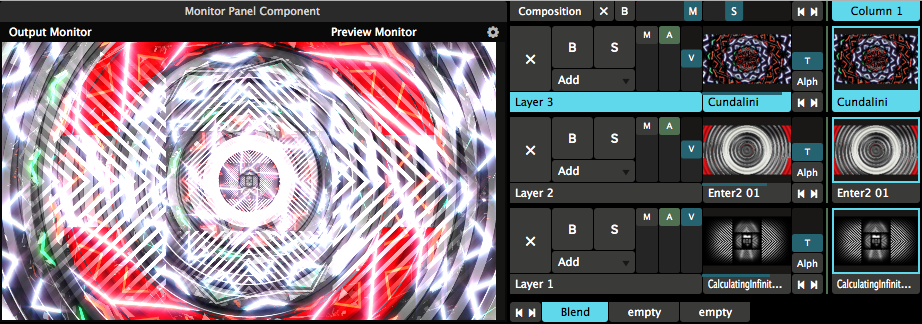

This is a great way to assign content to specific areas of your stage. Of course, instead of dragging the whole screen to create the Slice Transform effect, you can also drag a selection of slices instead. You can use the Pacman icon to toggle each slice through 4 orientations: Regular, Mirrored Horizontally, Mirrored Vertically, Mirrored Horizontally and Vertically.

If you realise you needed it after all, you can simply drag the slice back in from the Slices tab. If you don't need content to show in a particular slice, you can hit X to get rid of it. The S button will Solo that slice and hide the others. You can use the B toggles to temporarily hide content for that specific slice. In Mask mode, you leave the content as it is, and essentially use the Slice Transform as a mask to show and hide specific parts of it. Stretchīy using Stretch, the content will be warped to match the shape of the slice exactly. You can switch to Fit, in which case it will scale the content to be completely visible in the slice, possibly adding empty pixels on the sides or top and bottom. This will fill the slice with the content, and crop the sides or top and bottom if the aspect ratios don't match. Scaling Fillīy default, the content will be scaled to Fill within the slice.
#Resolume 5 how to set opacity to layer mask update#
The Slice Transform effect works with regular slices, polygon slices and fixtures, takes into account the orientation of the slice, and respects any input masks applied on the slice.Ĭhanging the slice in the Advanced Output will update the scaling of the content automatically. Now, by dragging the Screen onto a clip, a layer, a group or the whole composition, you can instantly place content in every slice in that screen. The Slices panel will show you all the screens and slices you currently have available in the Advanced Output. It's available as an effect under the moniker Slice Transform, but the best way to access it, is to open the Slice panel via View > Show Slices. On Arena, you get access to a very special type of Transform. This gives you quick access to PIPs and scalings that you often use. Transform PresetsĮach Transform setting can be saved as a preset. The very first Transform in each panel can not be deleted. This way, you can control how the Transform blends with the input texture. Options galore!Īny transform you apply after the first one, will have its own Opacity and Blend Mode, just like an effect. This way, you can do crazy stuff like first scale down and move a layer to the left half of the screen, then apply a mirror effect, and finally position the result of this in the bottom right of the composition. Transform is available as an effect in the Effects list, and you can apply it anywhere in the effect chain. The anchor parameter can also be expanded. This is exactly what the anchor point does in Resolume. No judging.ĭepending on where you've stuck the pin, when you now spin the poster, it will spin around that point. The Justin Bieber poster that "your sister" has on the wall. If you don't know what an anchor point is, think of it like sticking a pin in the Justin Bieber poster you have on your bedroom wall. Expanding the parameter will let you rotate along each axis individually. Measured in degrees, this will let you rotate the content around its anchor point. Expanding the parameter will let you scale the width and height individually. ScaleĪdjust the size of the content, proportionally to its original size. For all intents and purposes though, let's just say Position means you can move them pixely things here and there. Well, actually, *shoves glasses a bit further onto nose.* Actually, it adjusts where the anchor point of the content is on the X and Y axes.

PositionĪdjust where the content's center point is on the X and Y axes. ParametersĮach Transform effect has several parameters. Depending on which panel you're looking at, the Transform effect will let you adjust the position, scale, rotation and anchor point of this composition, this group, this layer or this specific clip. Every panel has a default Transform effect applied.


 0 kommentar(er)
0 kommentar(er)
